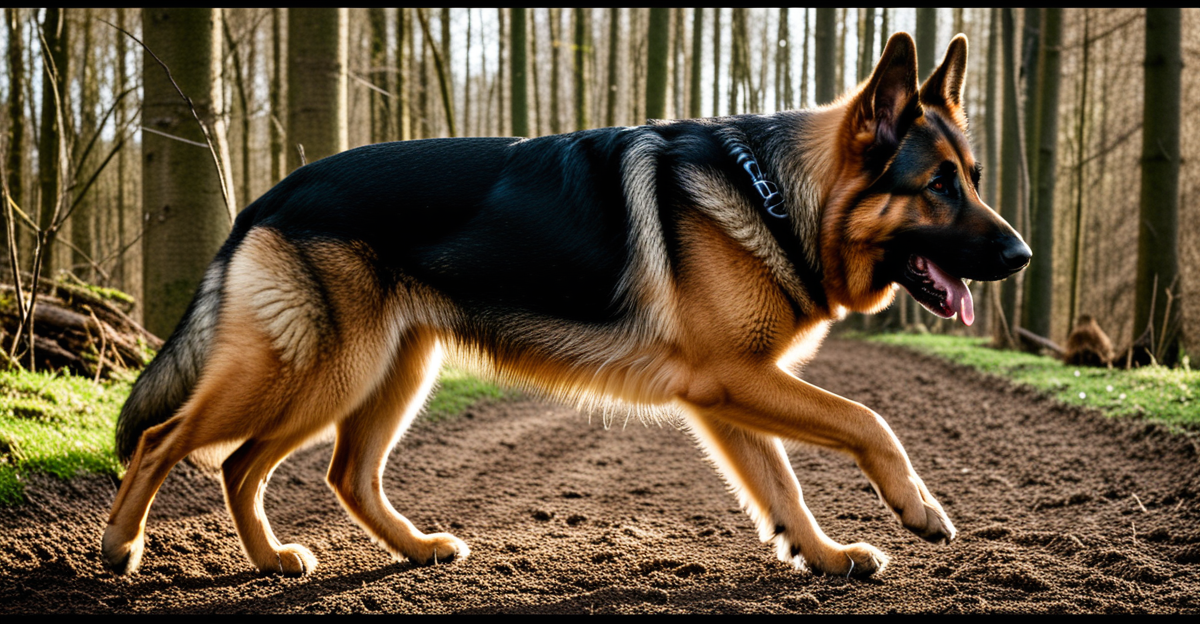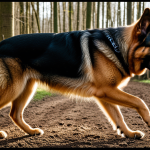Recognising and Assessing Hind Leg Weakness in German Shepherds
Identifying hind leg weakness in German Shepherds early is crucial for effective intervention. Common signs include noticeable mobility issues such as difficulty rising, reluctance to climb stairs, and an unsteady gait. Owners may also observe dragging paws or limping that persists beyond a short period.
To assess German Shepherd hind leg weakness at home, check for muscle atrophy by gently feeling the hind leg muscles for any loss of mass compared to the front legs. Watch your dog’s posture and movement during walks for signs of discomfort or imbalance. If you notice any signs of hind leg weakness, measuring the range of motion in the hips and knees can offer further clues.
A lire aussi : Preventing Overfeeding in Toy Fox Terriers: Essential Health Risks and Smart Tips for Care
Professional assessment involves veterinary physical exams, which may include neurological testing and imaging to identify underlying causes. Early recognition of signs of hind leg weakness allows for timely intervention, preventing progression and improving outcomes. This proactive approach helps maintain your German Shepherd’s long-term mobility and quality of life, highlighting the importance of vigilance and regular monitoring for subtle changes in hind leg strength or function.
Targeted Exercise Routines to Strengthen Hind Leg Muscles
Building strength in your German Shepherd’s hind legs requires carefully designed exercises tailored to their specific needs. Effective German Shepherd exercises focus on improving muscle tone, joint stability, and overall mobility. A proper hind leg workout includes low-impact activities such as controlled swimming and walking on varied terrain, which promote muscle growth without causing strain.
Avez-vous vu cela : Detecting Arthritis in Elderly German Shepherds: Proven Techniques to Manage Your Beloved Canine’s Comfort
Safe at-home routines might involve gentle uphill walks or the use of balance boards to enhance proprioception and hind leg engagement. These exercises encourage muscle recruitment while minimizing injury risk. Frequency is key: start with short sessions, gradually increasing intensity as comfort and strength improve. For younger dogs, moderate, consistent workouts support growth without fatigue, while older dogs benefit from more conservative progressions.
Veterinary guidance ensures exercises suit your dog’s condition and age. Incorporating German Shepherd exercises regularly can effectively counteract mobility issues, support recovery, and prevent future weakness. Remember, monitoring your dog’s response during exercise helps avoid overexertion. In summary, targeted exercise routines are vital tools for maintaining and enhancing hind leg strength, offering practical, vet-approved solutions for German Shepherd hind leg weakness.
Physical Therapy and Rehabilitation Techniques
Physical therapy plays a pivotal role in German Shepherd rehabilitation focused on overcoming hind leg weakness. Canine physical therapy aims to improve muscle strength, enhance joint stability, and restore proper mobility through tailored modalities. Common techniques include controlled hydrotherapy, therapeutic laser treatment, and targeted massage to stimulate circulation and reduce inflammation.
DIY physical therapy methods can complement professional care. Gentle stretching exercises done daily help maintain flexibility and prevent stiffness. Using balance and proprioception tools such as wobble boards safely engages hind leg muscles, supporting recovery. However, owners must be cautious to avoid overexertion, closely monitoring their dog’s response during sessions.
When should you seek a professional canine rehabilitation therapist? If your German Shepherd shows persistent signs of hind leg weakness, struggles with mobility issues despite home care, or after surgery or injury, expert intervention is crucial. Professionals develop customised rehabilitation plans that adjust intensity and techniques as your dog progresses, ensuring safe and effective recovery.
Incorporating physical therapy significantly boosts recovery from hind leg weakness, complementing exercises and nutrition. This holistic approach enhances muscle activation, reduces pain, and optimises long-term joint function, vital for maintaining your German Shepherd’s mobility and quality of life.
Recognising and Assessing Hind Leg Weakness in German Shepherds
Early detection of German Shepherd hind leg weakness is essential to prevent worsening mobility issues. Key signs of hind leg weakness include difficulty standing or jumping, frequent stumbling, and reluctance to exercise. Owners might notice dragging or uneven paw placement, indicating muscle or nerve problems.
At home, you can assess your dog by observing their gait during walks and checking for muscle mass loss in the hind legs compared to the forelegs. Gently pressing the joints and monitoring response to touch may also reveal discomfort or limited motion.
When signs persist or worsen, veterinary evaluation is critical. Professionals use neurological exams and imaging studies to pinpoint causes such as hip dysplasia or nerve damage. Early and accurate assessment enables timely intervention, improving chances of recovery and enhancing your German Shepherd’s long-term mobility.
Recognising subtle signs of hind leg weakness quickly empowers owners to act decisively. Routine observation combined with simple home assessments provides a practical approach to monitor your dog’s health, ensuring you catch problems before they severely impact quality of life. Regularly checking for changes in posture, muscle tone, and movement patterns keeps you informed and ready to seek professional support if needed.
Recognising and Assessing Hind Leg Weakness in German Shepherds
Detecting German Shepherd hind leg weakness early allows for timely action before mobility issues worsen. Typical signs of hind leg weakness in German Shepherds include frequent stumbling, difficulty rising after rest, reluctance to jump or climb stairs, and noticeable dragging or uneven placement of the rear paws. Owners may observe muscle atrophy specifically in the hindquarters, with the muscles feeling less firm than usual.
How can owners assess this at home? Start by watching your dog during walks and play, noting any irregular gait or difficulty maintaining balance. Gently palpate the hind legs to feel for reduced muscle mass or joint stiffness. Testing your dog’s response to gentle manipulation of the hips and knees can reveal discomfort or limited range of motion—both relevant signs of hind leg weakness.
When should professional evaluation be sought? If these signs persist beyond a few days or progressively worsen, veterinary consultation is vital. Vets perform neurological exams and diagnostic imaging to identify conditions like nerve damage or hip dysplasia. Early recognition of German Shepherd hind leg weakness through vigilant observation and home assessment is key to preventing lasting impairment and ensuring your dog maintains healthy mobility.
Recognising and Assessing Hind Leg Weakness in German Shepherds
German Shepherd hind leg weakness presents distinct signs of hind leg weakness that owners should observe closely. Common symptoms include frequent stumbling, reluctance to jump or climb stairs, difficulty rising after rest, and dragging or uneven placement of hind paws. Muscle atrophy in the hindquarters is often palpable, with muscles feeling softer compared to the forelegs. These physical clues indicate progressing mobility issues that warrant attention.
At-home assessment starts with careful observation of your dog’s gait during walks or play. Look for irregular steps or imbalance. Gently palpate hind leg muscles and joints, checking for stiffness, pain, or reduced muscle mass. Testing hip and knee flexibility by slowly manipulating these joints can reveal discomfort or limited range of motion—critical signs of hind leg weakness that owners can identify without professional tools.
Early identification of German Shepherd hind leg weakness is vital. Prompt veterinary evaluation allows for diagnostic testing such as neurological exams or imaging to determine causes like hip dysplasia or nerve damage. Recognising and acting on signs of hind leg weakness quickly prevents worsening mobility issues, helping your German Shepherd maintain a higher quality of life through timely intervention and tailored care.










